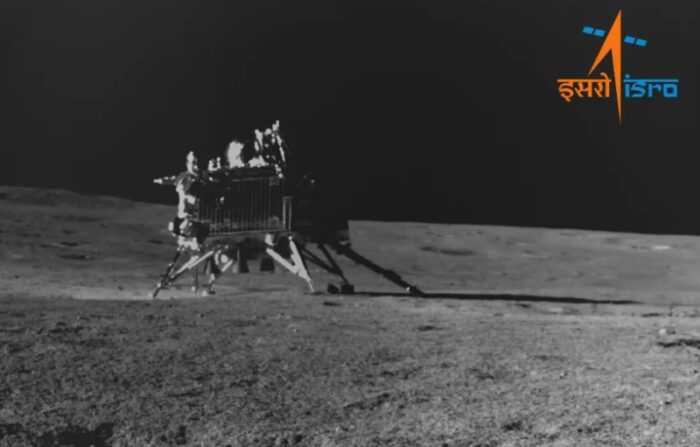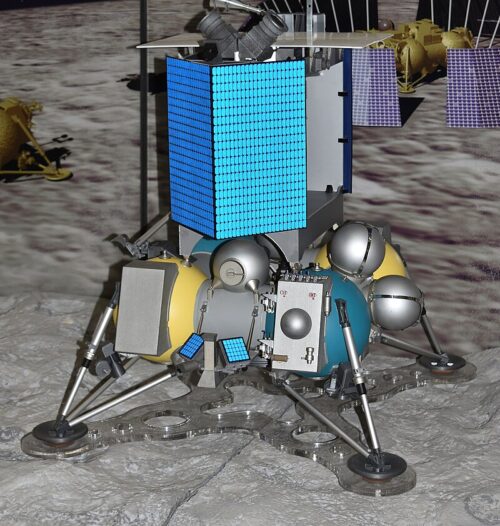With the success of India's Chandrayaan-3 lander and the plans for the future Artemis missions, everyone is buzzing about going to the Moon.
But landing on our nearest neighbour is hard to do, and NASA has proof.
Its Lunar Reconnaissanse Orbiter (LRO) recently sent back images of what looks like the crash site of spacecraft. Experts believe that it is the mark left behind after Russia's failed Luna 25 mission, which crashed on August 19.
Have a look at these before and after videos of the Moon's surface.
NASA’s Lunar Reconnaissance Orbiter imaged a new crater on the Moon’s surface that is likely the impact site of Russia’s Luna 25 mission, which experienced an anomaly that caused it to impact the Moon on Aug. 19. https://t.co/PWS0zuI6WN pic.twitter.com/1XGpA5WRC5
— NASA Moon (@NASAMoon) September 1, 2023
What was Luna 25 trying to do?
Luna 25 was Russia's first lunar mission in almost fifty years. The Russian space agency, Roscosmos, was trying to be the first nation to land in the south pole region of the Moon.
But something went wrong. Instead of landing safely, Luna 25 malfunctioned and crashed, destroying the craft.
Instead, just four days later on August 23, the Indian Space Research Organisation (ISRO) successfully landed their craft, Chandrayaan-3, on the south pole. Not only was it India's first successful lunar landing, it won the race to the south pole.
Why the south pole?

Chandrayaan-3 has been learning new things about the Moon's south pole. (ISRO)
Over the last decade, scientists have become more and more curious about the Moon's south pole. With NASA and other agencies eager to set up lunar bases and bring humans to the Moon for months at a time, we need to find sources of water.
It is believed that sources of frozen water are hidden within the rock in certain places across the Moon. The Chinese lander Chang'e 5, which landed on the far side of the Moon in 2020, reported back last year with evidence of very tiny amounts of water in the dirt.
Experts think that south pole will have even more water to find. This makes Chandrayaan-3's mission a very big deal. It has already learned facts about the elements present on the Moon and will continue its research later this month.
The new space race

A model of the Luna 25 lander. Unfortunately, the craft crashed and was destroyed. (Wikimedia Commons)
It is also why the failure of Luna 25 would've stung for Roscosmos.
As the United States moves full speed ahead with Artemis, Russia does not want to be left behind. This is similar to the "space race" of the 1950s and 60s, when the US and Russia went head-to-head trying to outdo each other's space programs.
In that battle, the Russians gained an early advantage, launching the first satellite (Sputnik) and sending the first human into Earth orbit (Yuri Gagarin). But the Americans had the last laugh when their Apollo missions sent the first human to the Moon (Neil Armstrong).
By the 1980s, Americans and Russians were working side-by-side in space, especially on the International Space Station (ISS).
But after the invasion of Ukraine by Russia, tensions between the nations are high and a new space race is here. This time, the US and Russia are joined by many other nations, including Canada, India, China, Japan, and countries all across Europe (the European Space Agency, ESA).
It is likely that the LRO will be able to take photos of many more lunar landings in the future.
 This is the crater NASA believes was left behind after the Russian craft Luna 25 crashed. It is about 10 m (30 feet) wide. (NASA’s Goddard Space Flight Center / Arizona State University)
This is the crater NASA believes was left behind after the Russian craft Luna 25 crashed. It is about 10 m (30 feet) wide. (NASA’s Goddard Space Flight Center / Arizona State University)








